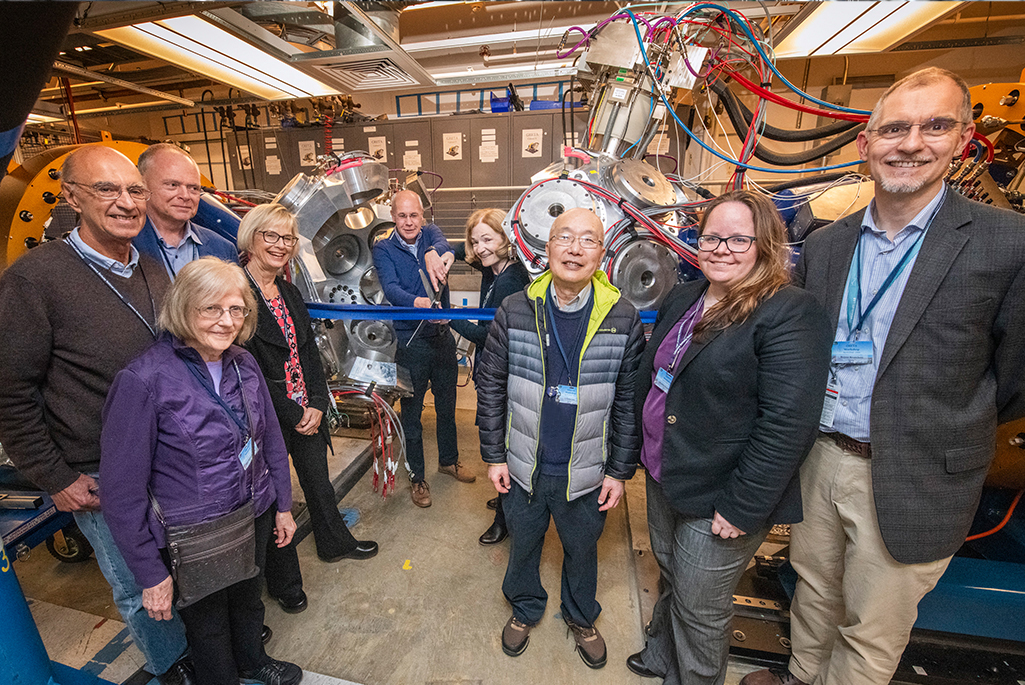Berkeley Lab’s GRETA (Gamma-Ray Energy Tracking Array) celebrated the completion of its construction with a 2-day workshop and dedication event on April 23-24.
Researchers and collaborators from around the world convened for presentations on the evolution of gamma-ray spectroscopy, the technologies that have enabled the science and the science itself – beginning with GRETINA (the Gamma-Ray Energy Tracking In-beam Nuclear Array) – and looking forward to the next decades of experimentation with GRETA.
GRETA is an innovative new instrument for studying the structure and properties of atomic nuclei. It will be a key instrument at the Facility for Rare Isotope Beams (FRIB), now operating at Michigan State University, where thousands of new and rare (short-lived) radioactive isotopes will be produced, enabling expanded research into exotic nuclei that are heavier in mass and closer to the limits of existence. Capable of reconstructing the energy and three-dimensional position of γ-ray interactions, GRETA’s innovative design provides an unprecedented combination of full solid-angle coverage with high efficiency, excellent energy and position resolution, and background rejection through gamma-ray tracking, to contribute to the majority of the nuclear structure and nuclear astrophysics science programs at FRIB. GRETA will be movable between the various beamlines at FRIB, and it will also be used at other facilities such as the Argonne Tandem Linac Accelerator System (ATLAS) stable-beam facility at Argonne National Laboratory.
Scheduled for phase-I completion this summer, GRETA is on track to be the world’s most powerful gamma-ray reading instrument and well-positioned to obtain DOE CD-4A approval, which will allow GRETA operations to begin at FRIB.
